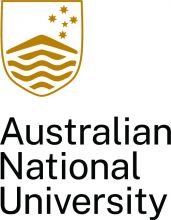Creative arts courses face “disaster” in Australia’s universities, as Covid-induced redundancies threaten to finish off programmes that have already been cut to the bone and the government’s proposed fee reforms add uncertainty for those subjects, experts have warned.
Two well-regarded arts?courses appear set for closure at Monash University, with a round of voluntary redundancies targeting almost all their staff. Art education veteran Sasha Grishin said that he expected similar outcomes elsewhere as other universities jettisoned employees.
Professor Grishin, an art historian and emeritus professor at the Australian National University, said that expensive-to-teach subjects considered a “luxury” rather than core business, often inherited from previously independent colleges, visual and performing arts would be first to go. “We probably won’t know the full extent of the disaster until November, when universities have to finalise their syllabuses for the following year,” he added.
Change management proposals at Monash, which wants the equivalent of 277 full-time staff to agree to “voluntary separations”, include abolishing the two musicology positions and three of the four positions at the Centre for Theatre and Performance (CTP).
Monash cites low enrolments and “insufficiency of work” in the two areas – judgements based on outdated numbers and misinterpretation of course structures, according to the affected academics. Musicologist Paul Watt said that his group taught at least 700 undergraduates a year and supervised about 10 doctoral students.
Monash musicology research has been “of unquestionable global significance and impact”, according to 71 academics from 10 countries who signed an open letter begging Monash to reconsider.
ANU, RMIT University, UNSW Sydney and the University of Sydney, all of which have fine and visual arts offerings, are among the other institutions currently seeking redundancies. Last month, Sydney’s arts dean explored cuts to 30 per cent of staffing, in what the university described as initial research into potential “scenarios”.
The university cut 8 per cent of its arts and social sciences courses earlier this year, while the closure of its Sydney College of the Arts has been mooted since 2015.
UNSW’s College of Fine Arts, which suffered cutbacks and was absorbed into the art and design faculty in 2014, now faces a further merger with two other faculties to eliminate “education overlap and duplication”. ANU reportedly considered closing its music school in 2015 following major funding cuts in 2012.
Professor Grishin said arts programmes were threatened by “very minimal” staffing levels. “In areas where the norm was to have six or seven members of staff, now we’re lucky to have two," he added. "If one of those falls over it’s no longer viable.”
He said that education minister Dan Tehan’s proposed fee hikes in the arts and humanities added further uncertainty. “We have a government where there’s a triumph of philistinism,” argued Professor Grishin. “The conservative part of politics in Australia say there’s not many votes for us here [in the arts and humanities] anyway.”
Creative arts face “death by a thousand cuts” rather than openly planned closures, he said. “It would probably be better if we had the courage to do the latter.”
Jane Griffiths, a professor in Monash’s Centre for Theatre and Performance, said the centre consistently rated highly in student evaluations and arranged many industry internships.
She added: “We are a crucial part of the ecosystem of the arts in Melbourne. There is no financial reason to explain this. There’s also no pedagogical reason.”
A Monash spokeswoman said that the theatre and performance major would be “disestablished and transformed into a minor sequence” offered within the School of Music. She said “multiple efforts” to increase musicology enrolments had proved unsuccessful. Current students would still be able to complete their studies, “but the range of units on offer in these fields will be reduced”, she added.






